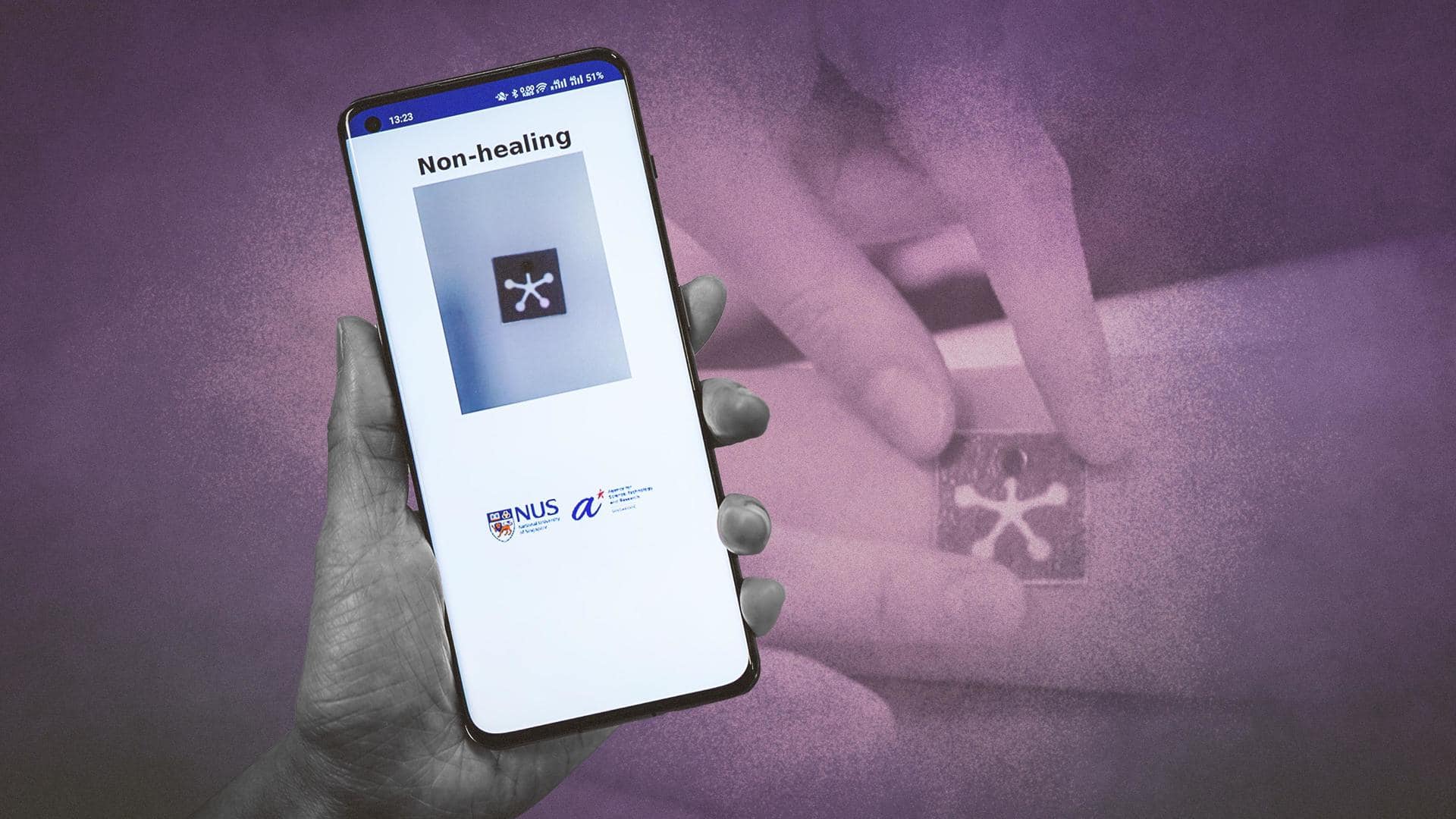
This AI-powered wearable patch can monitor your wound recovery
What's the story
In a groundbreaking achievement, researchers from Singapore have invented a paper-like sensor patch that operates without batteries and utilizes Artificial Intelligence (AI) to monitor wound recovery with utmost convenience and effectiveness. Named PETAL, this novel technology provides an early warning if your wound gets worse, and it will alert your doctors so they can help you as quickly as possible.
Biomarkers
Each petal of this flower-shaped wearable device monitors specific biomarkers
Scientists from the National University of Singapore (NUS) and the Agency for Science, Technology, and Research (A*STAR) collaborated to create this wearable technology. This sensor, shaped like a pinwheel flower with five petals, monitors different aspects of a wound's health. Each petal tracks a specific biomarker, such as temperature, acidity, uric acid, moisture, and a smelly compound called trimethylamine.
Data collection
Central hole collects wound fluid and sends it to sensors
The panel has a hole in the middle that collects fluid from the wound and sends it to the sensors. These sensors use different chemicals that change color to measure specific indicators. Benjamin Tee, the principal researcher, told during a media briefing that analyzing the patch is a convenient process that allows clinicians to quickly determine if wounds are recovering properly.
Current process
Current process necessitates regular removal of dressing to monitor wounds
Currently, doctors physically check wounds to see how they are healing and it takes up to three days to identify any infections. The dressing applied also needs to be changed regularly, making the risk of infection higher and causing more pain for patients. Professor Tee explained that if the dressing, like bandages, is not done properly, it can lead to infections.
Accuracy
This sensor is lightweight and has an accuracy of 97%
Patients can use their smartphones to take pictures of the sensor patch, which can then be sent for analysis using an AI algorithm. Unlike other wound sensors, PETAL is lightweight and doesn't need bulky circuit boards or batteries. The researchers found in lab experiments that the sensor patch had an impressive 97% accuracy rate in distinguishing between healing and non-healing chronic and burn wounds.
Wound types
Tested on chronic and burn wounds
The sensor patch has been tried on chronic and burn wounds. It can also be customized for different wounds by adding other sensors, as per doctors' requirements. Professor Tee mentioned that although PETAL is currently tested for small wounds, the technology can be developed to monitor larger wounds, leading to its increased adoption in the next five to 10 years.
Information
Not yet available for purchase
The wearable technology is currently not available for purchase. The researchers have filed an international patent for their invention and are preparing to proceed to human clinical trials in the near future.